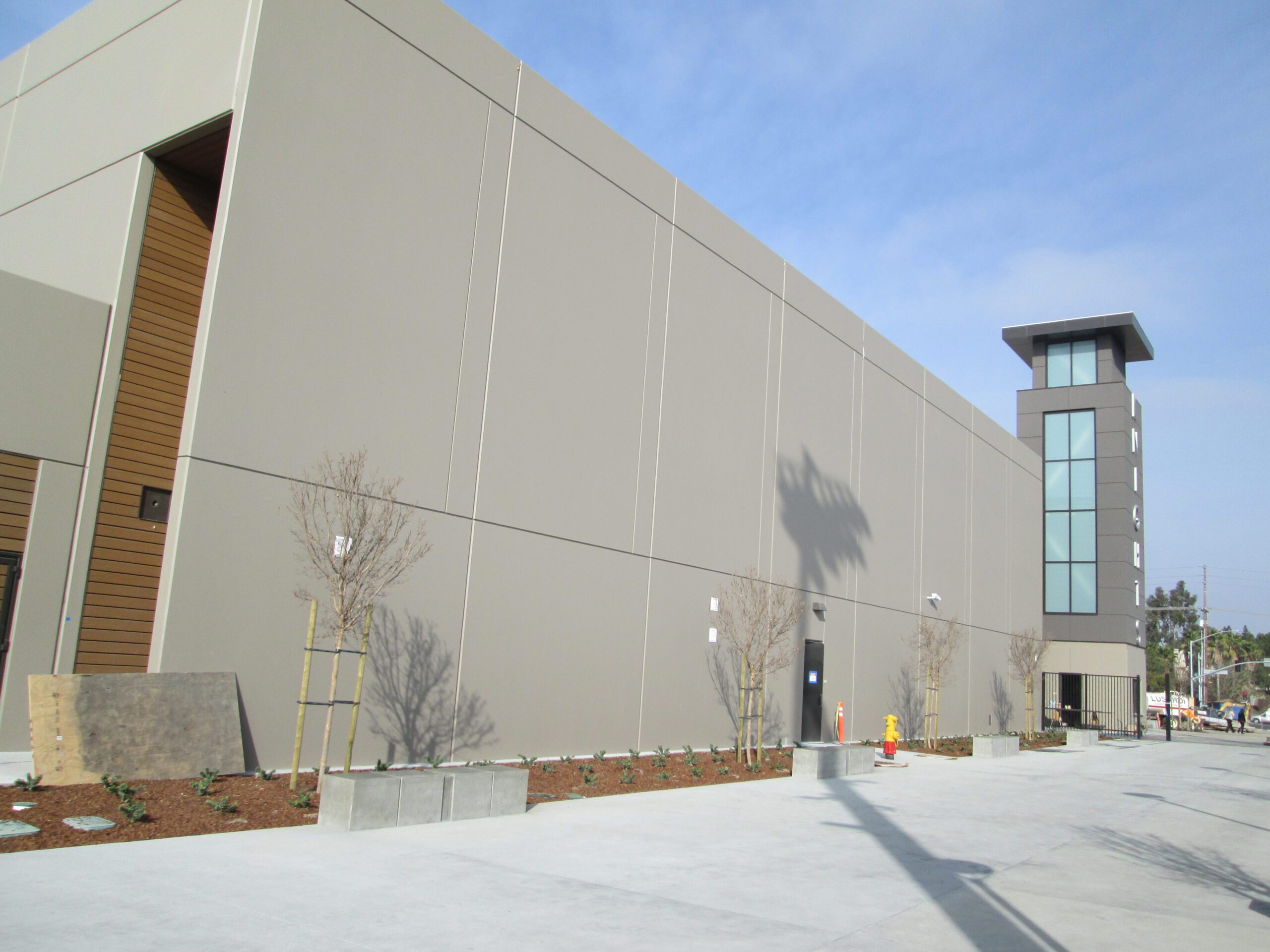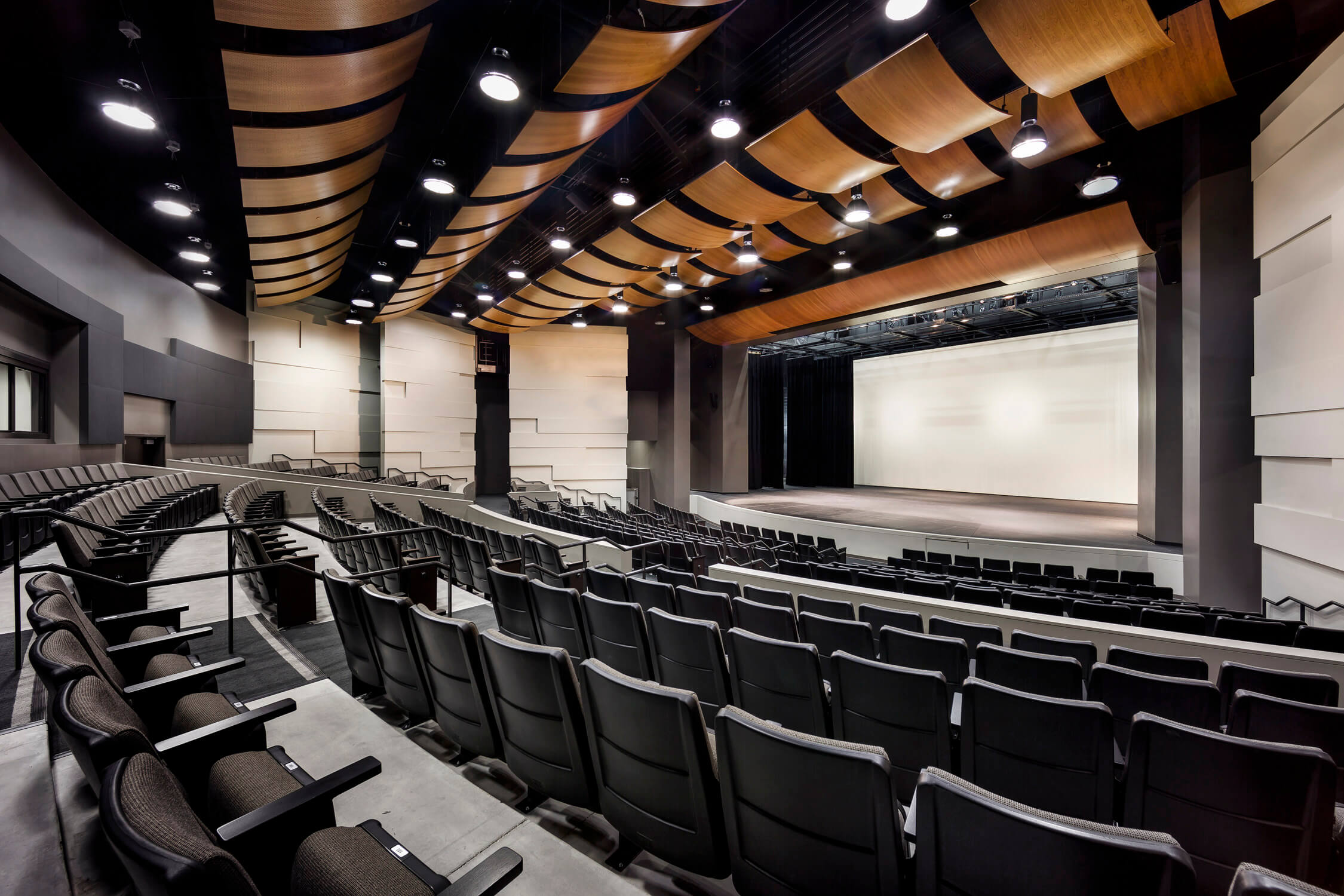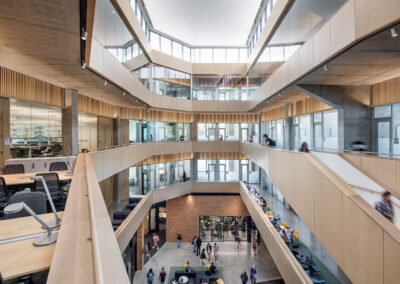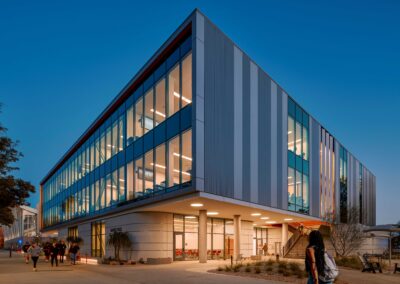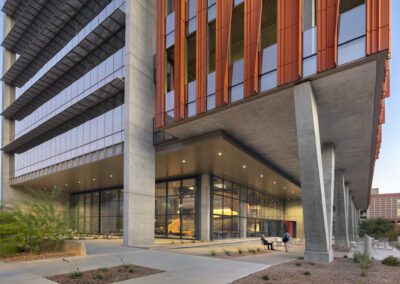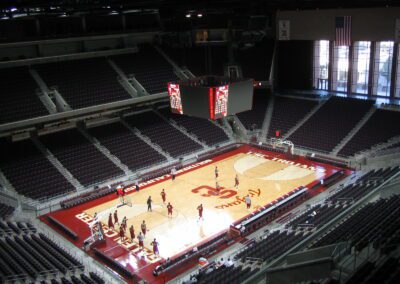Details
- Size: 403,000 square feet
- Completion Date: 2013
Team
- Architect: LPA, Inc.
- Contractor: Lusardi Construction Company
Completing construction in late 2013, San Marcos High School (SMHS) opened a new 420,000 square foot campus (more than doubling the square footage of the previous campus) in January 2014. The new facilities transformed the existing 1,800-student single-story campus into a 3,000-student state-of-the-art, multi-story high school. These new facilities include a variety of services including college preparation, math, science, technology, performing arts, and special education programs.
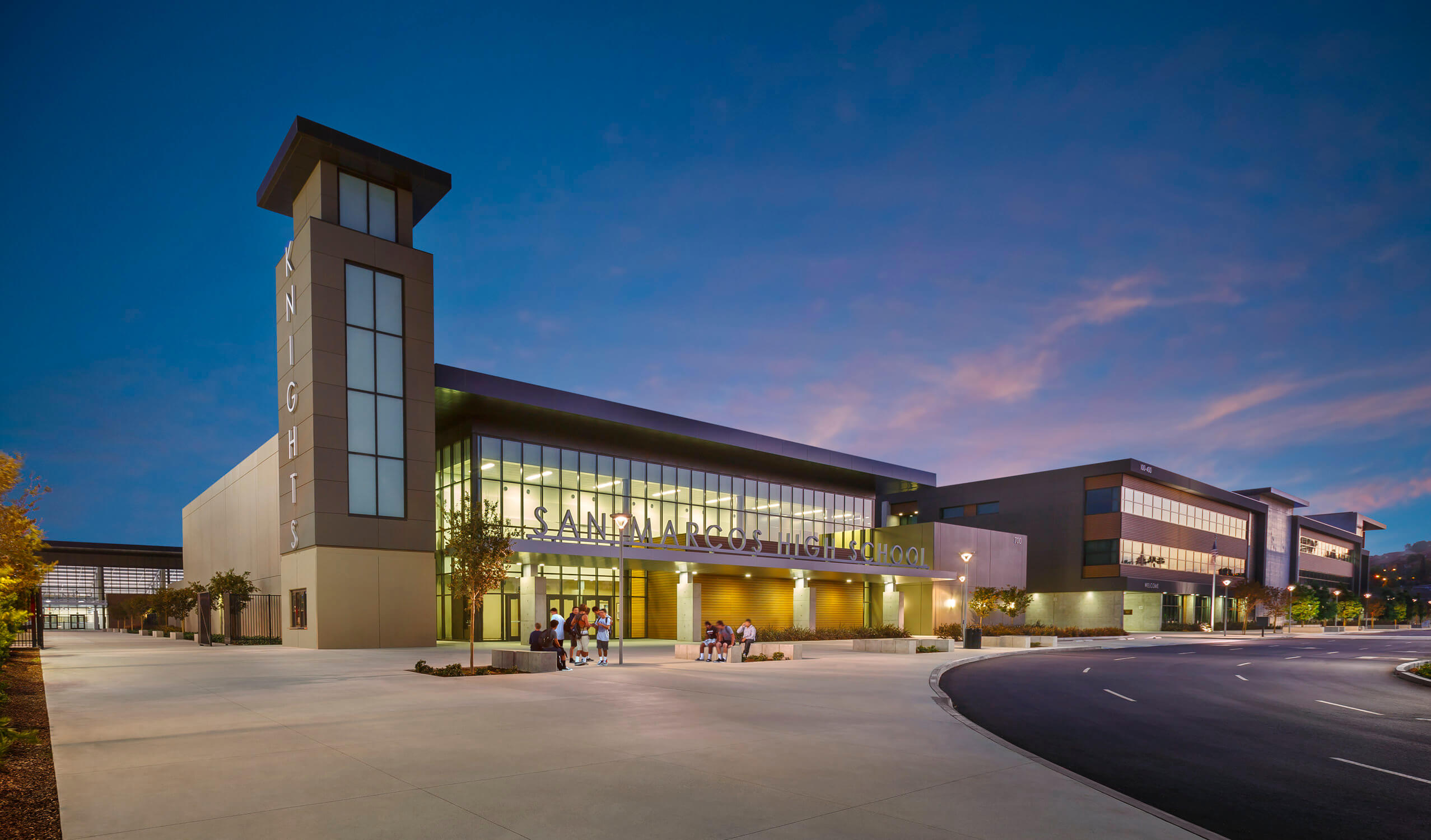
The new SMHS campus features 7 new buildings, which utilize tilt-up concrete, cast-in-place concrete, and structural steel. These include a new 2-story Performing Arts Center with a 400-seat theatre, a 2-story Athletic Center housing 3 basketball courts, a 3-story Academic Building, and a 1-story Academy Building. The $136 million modernization utilized a phased construction schedule, allowing the school to occupy buildings as they were completed. Tilt-up construction was the preferred construction method for the majority of the campus, driven by three critical concepts: sustainability, aesthetics, and schedule.
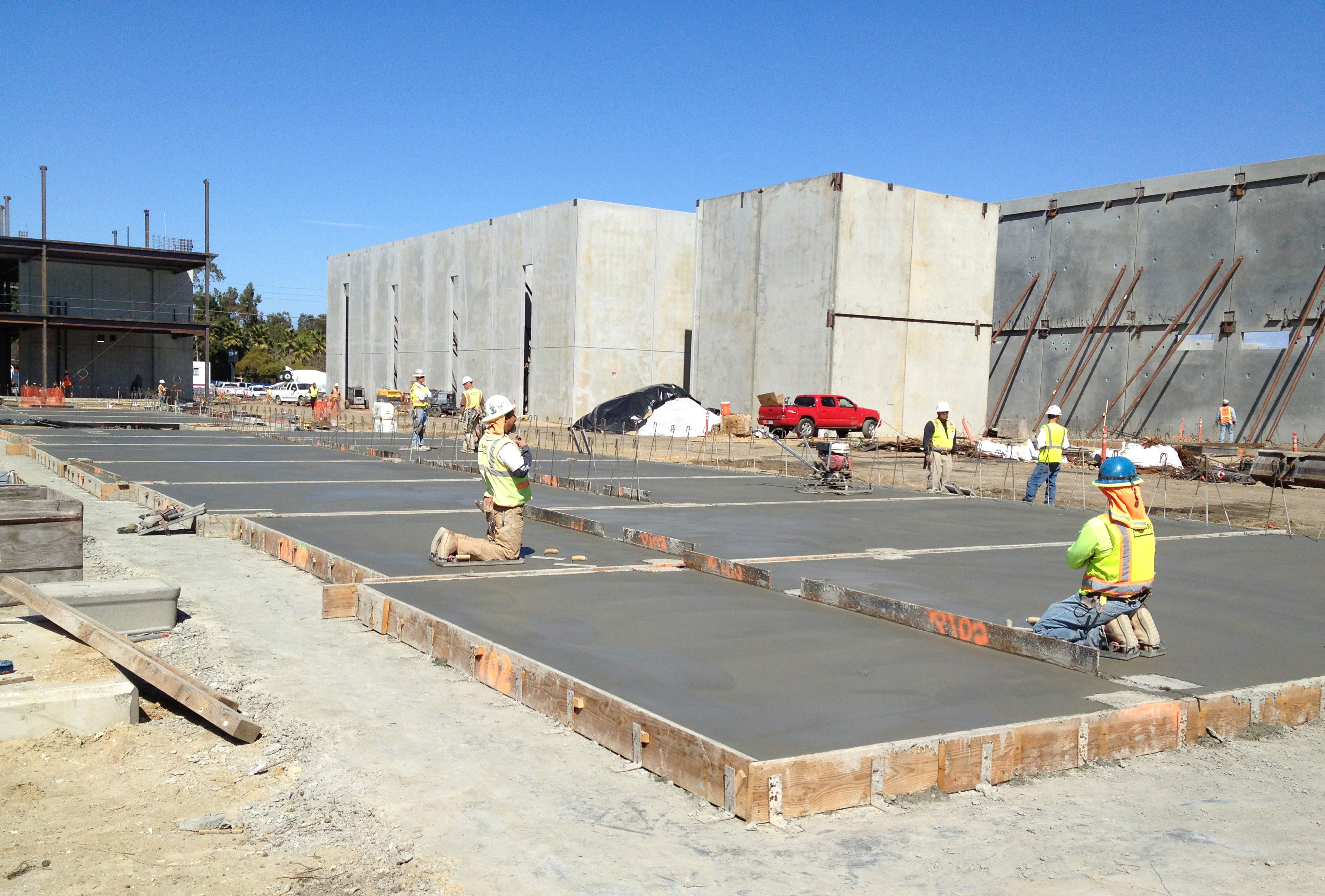
Concrete serves as both a durable and architecturally accommodating material. The tilt-up construction utilized a smooth slab on grade casting bed. This allowed for precise construction, minimizing architectural blemishes and defects from the finished surfaces. In addition, tilt-up construction allowed for an accelerated construction schedule, by significantly reducing construction time compared to traditional cast-in-place concrete. By casting the wall panels on-site, the contractor was able to efficiently sequence the wall panel construction. With over 300 wall panels, the time and material savings were quickly realized.
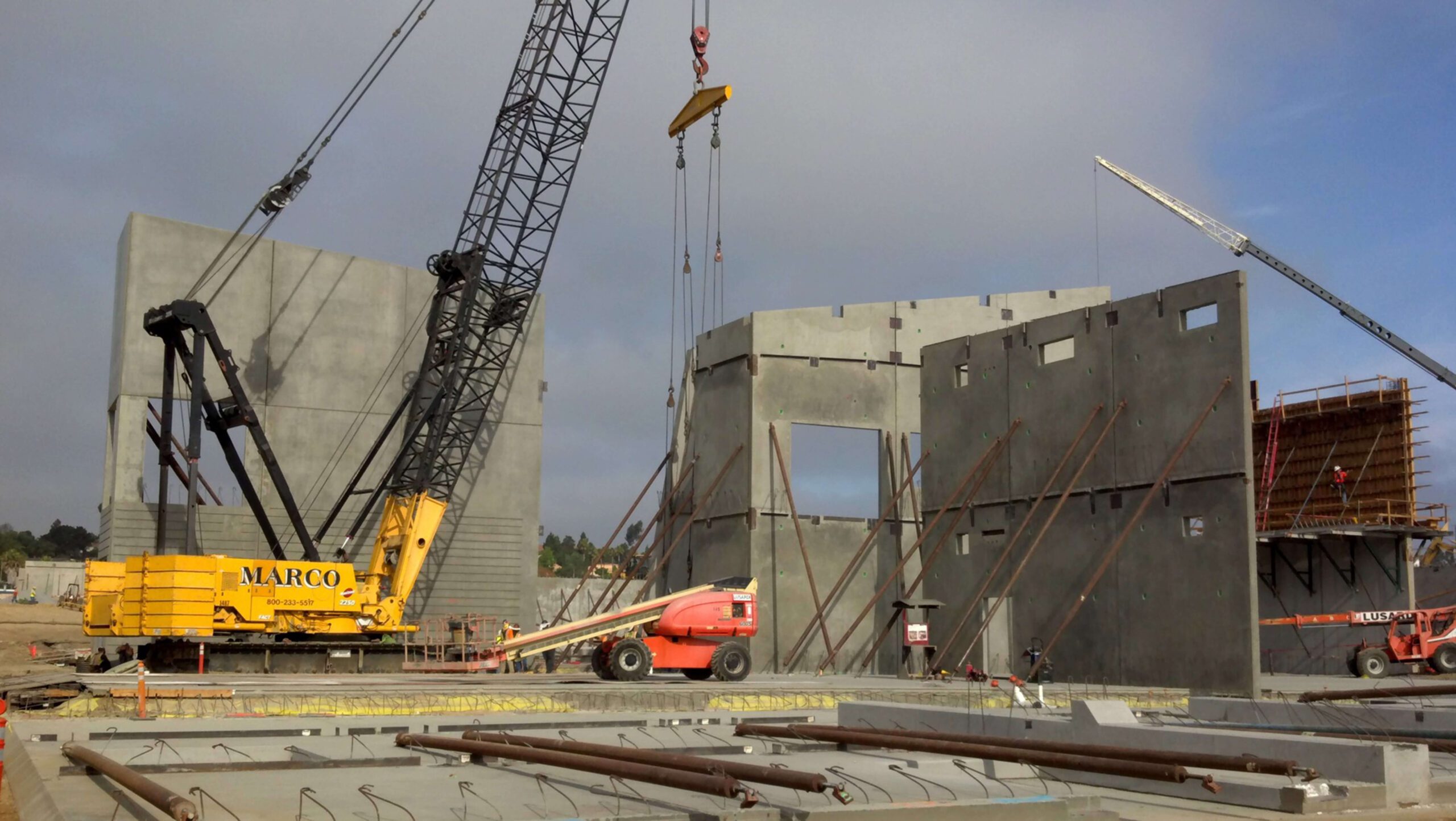
Tilt-Up Construction
The Owner and design team employed many sustainability strategies including the use of recycled materials in the concrete mix designs and using locally sourced materials, reducing the carbon footprint from material transportation. The team took advantage of concrete’s thermal properties, which allow interior spaces to stay cooler, significantly reducing the demands on the campus’ mechanical systems.
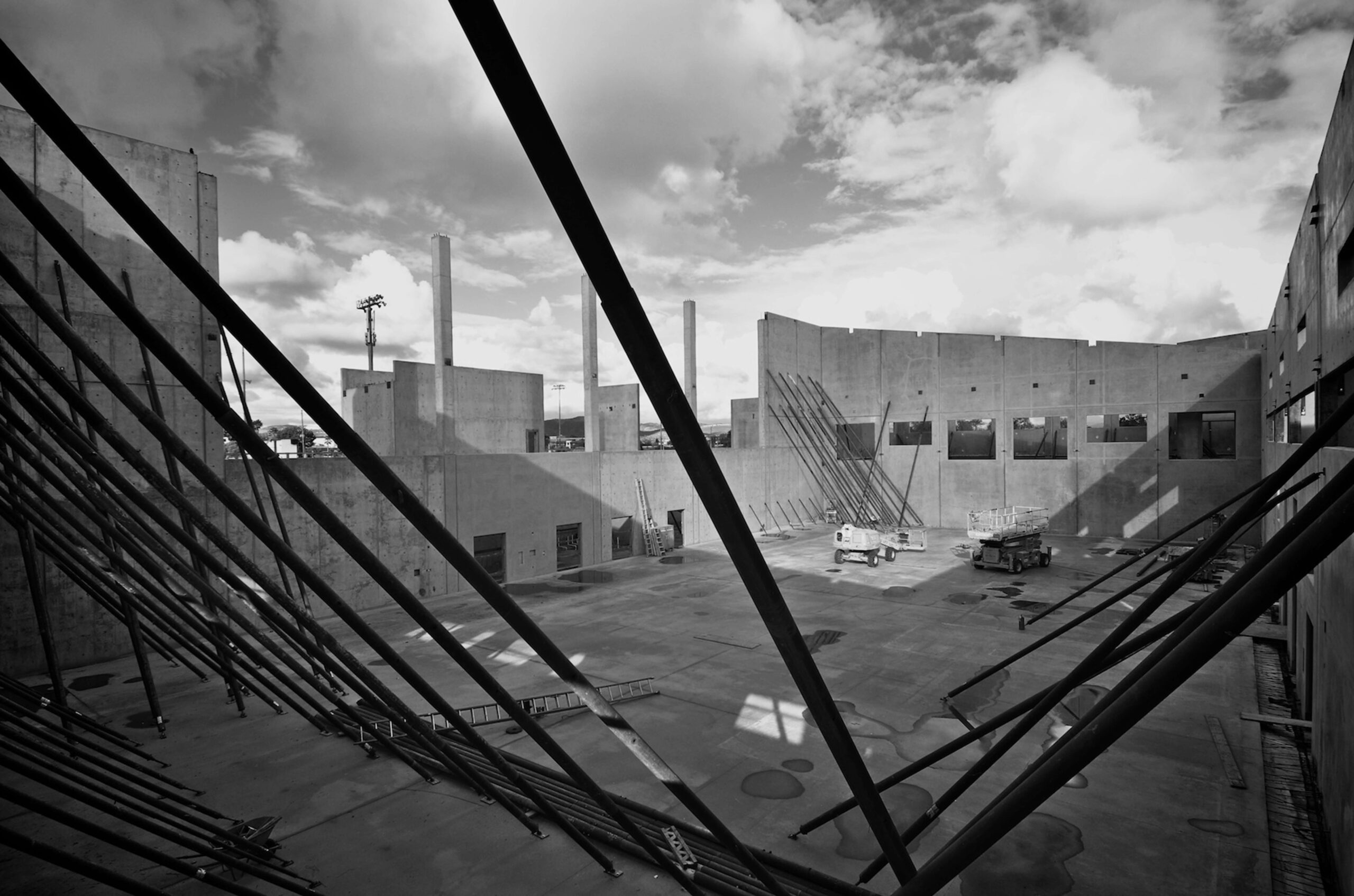
The structural design provided substantial cost and schedule savings by optimizing the typical tilt-up wall panel thickness and rebar distribution for the various heights. This optimization of wall panels allowed for construction materials to be efficiently used, resulting in cost savings throughout the project.
In addition, the wall panel to foundation connections were optimized and designed for various loading conditions. JAMA worked closely with the contractor to develop unique connection systems that were efficient to fabricate and straightforward to install. Again, this allowed for fabrication and construction efficiency, saving both time and money.
